KEY CONCEPTS
•
Jet engine lubricant formulators are held to strict and lengthy standards in the form of specifications tests to ensure safety and quality.
•
New engine lubricants often take a decade or more to launch, mainly because new oils must be subjected to OEM specific testing.
•
Electrification of the aviation industry has started, with hybrid technology occurring in demonstrators first. Because hybrid aircrafts will still require engine lubrication, oils will need to retain their jet engine lubrication functions while also accommodating electric motor cooling capabilities, opening the door for innovation.
If you cracked the hood of any airplane during World War II, chances are you would have found mineral oil lubricating the engine. During the 1940s and 1950s, that began to change. The aviation industry started to shift toward using synthetic lubricants for engines, mainly because mineral oil couldn’t survive the increasing temperatures of newer engine models, a trend that has continued to the present day.
Over the years, engine manufacturers have continued to strive toward better, more efficient engines. This increases heat, which, in turn, increases the amount of heat a lubricant needs to pull from an engine. Though engines continue to get hotter, jet engine lubricants have retained their base oil chemistry.
Now engine manufacturers build and design engines to work with existing lubricants, and new lubricants must be approved to function in current engines. Though it ensures safety, this limit in innovation makes it more difficult to meet the continuing demand to manage increasing engine temperatures, which has grown more intense over the last few decades and is expected to continue.
What drives engine lubrication formulation?
Jet turbine engines are extremely power dense machines, which means they create a substantial amount of heat. To withstand this heat, engines are composed of the highest temperature capable nickel-based alloys, so much so that the hottest blades are actually running above their melting point. To add to this, turbine engines are constantly releasing heat due to a continual combustion process, in contrast to the cyclical process in an automobile, which fluctuates in its heat output over time.
As a result of these high operating temperatures, turbine engine lubricants have their job cut out for them. Michael Douglass, advanced research associate at ExxonMobil, says, “The main job of the jet engine lubricant is to remove heat from the engine.” He explains that the oil fulfills this purpose by removing heat from certain areas of the engine and eventually releases it with burned fuel. This process prevents temperatures from rising to unsustainable levels in the bearings and elsewhere, and helps sustain the overall thermal cycle of the engine.
In addition to withstanding and removing heat, turbine engine lubricants need to last because, unlike automobiles that receive regular oil changes, an aviation engine only receives oil top-offs. After each flight, a small amount of oil is added to the engine, which slowly consumes it over time. And though a plane may carry thousands of gallons of fuel, it only contains a few gallons of oil.
To accommodate increasing demands, especially rising engine temperatures, lubricant formulators turned to synthetic bases in the 1950s. Although the types of additives can vary, the base oils in today’s commercial and military jet turbine engine lubricants are mostly polyol esters, so they all have similar heat transfer characteristics. Ron Yungk, senior technology associate at Eastman Chemical, says, “We would love to be able to design in better thermal conductivity and heat capacity to do a better job as a heat transfer agent, but we are fairly well confined to a certain class of chemicals by the specifications, and that winds up being polyol ester technology.”
The constraint is in place for good reason: it keeps gas turbine engine oils consistent and, thus, compatible with each other, meaning non-compatible lubricant mix ups won’t happen, which could result in oil failure.
For some newer, hotter gas turbine engines, lubricant companies have developed high performance oils because standard oils cannot withstand the engine temperatures. Although the base oil chemistry remains similar, these high-performance oils must meet increased requirements for thermal and oxidative stability while simultaneously resisting oil deposition. The original equipment manufacturers (OEMs) also want to extend engine maintenance intervals or the thermal design envelope for other equipment manufacturers.
Because of both the limitations imposed on jet engine lubricants and the extreme conditions they are required to survive, formulators must meet strict standards before an oil is approved for use to avoid real-world consequences. Yungk likens a lubricant failure to a heart attack. “If you have too many deposits that prevent the flow of oil getting to a bearing, you can starve that bearing of the necessary lubricant, and then the bearing will fail, and the whole jet engine fails.” While the approval process is long, somewhat slowing innovation, strict standards ensure this type of failure is avoided.
Current lubricant demands prioritize safety
If a car experiences engine trouble, the driver can usually pull over. Since an aircraft can’t, lubricants have to pass the highest quality tests before commercial or military use. To ensure safety, two main specifications dictate the standards that a 5 cSt grade lubricant is held to: MILPRF-23699, developed by the U.S. military more than 50 years ago, and SAE AS5780, developed by industry professionals and published by SAE International. Additionally, over the last 20 years, as the need for a higher thermal stability oil increased, OEMs have played a larger role in defining what the industry specifications should include as well as establishing their own approval processes based on engine testing. Today, oil manufacturers have a long list of tests they run to show their lubricant is safe and effective for use in commercial and military aircraft.
Although approximately 95% of any turbine engine lubricant is a polyol ester base stock, the additives that make up the rest of the oil aim to increase thermal and oxidative stability, friction and deposition prevention, as well as inhibit corrosion, foaming and wear. For example, some lubricants contain an additive to prevent scuffing—a welding event that occurs between gear teeth or between bearings and their raceways due to friction-induced heat spikes. In the event friction increases above a threshold, the additive will break down into a solid material providing an extra film of lubrication as a last line of defense.
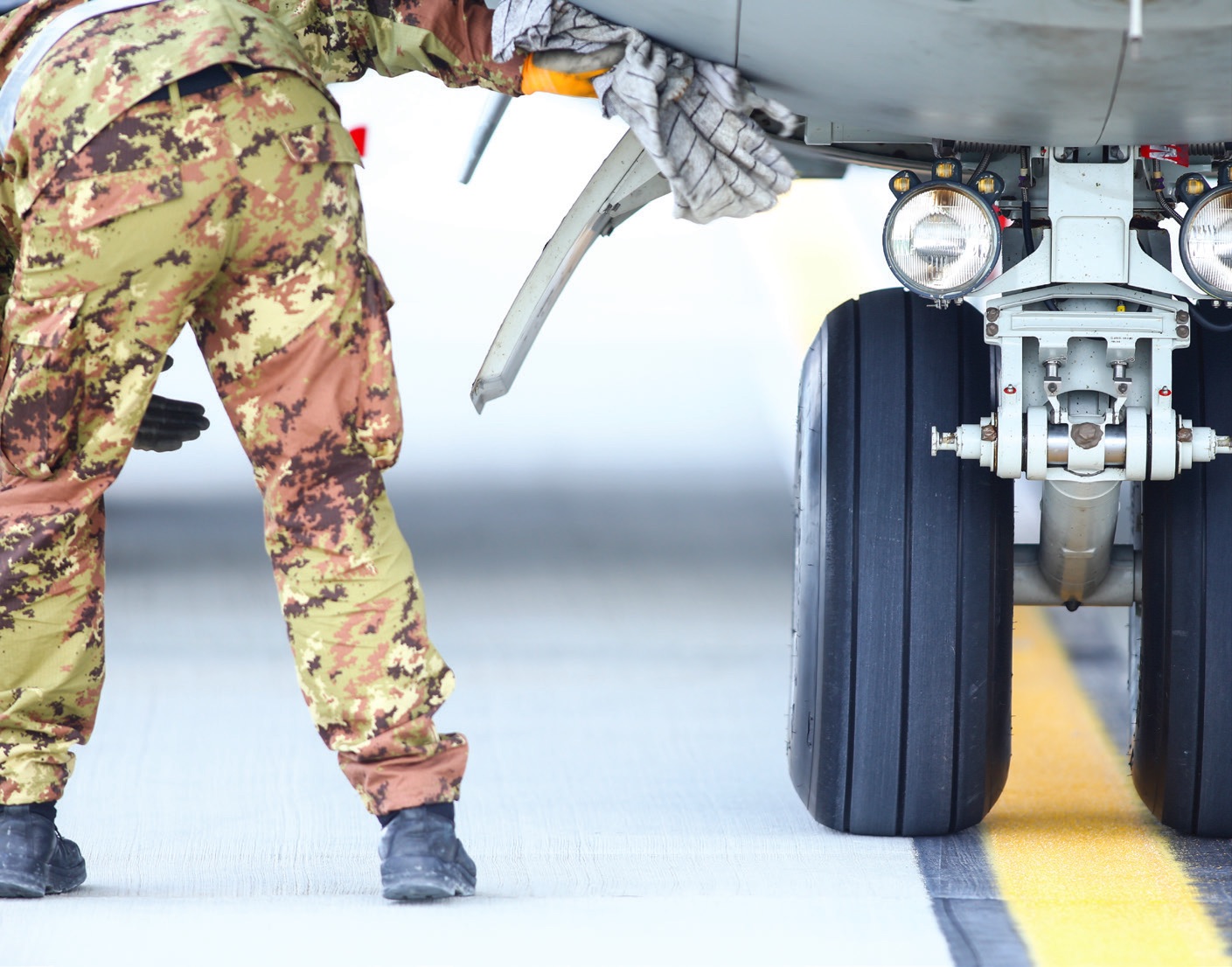
To measure whether the lubricants will perform while the aircraft is in flight, oil companies run an exhaustive list of tests.
Oxidation
Any commercialized oil must resist oxidation at high temperatures. Oxidation resistance is measured by heating the oil to 204 C for three days while bubbling air through it, and then assessing how the oil has survived, how the viscosity and acid number have changed and whether the metals have been attacked or not. The test does a good job at predicting how the oil will perform in the hot aviation engines in an oxidative sense, says Douglass. “That’s one of the reasons that the test has survived for 50 years.”
Coking
Running hotter engines also increases the risk of coking, an event that occurs when high temperatures initiate a chain reaction of deterioration and polymerization of the base stock into higher molecular weight material that eventually precipitates out of the liquid phase. This precipitation can form varnishes that build up to heavier, thicker solid material (
see Figure 1). As important as it is to prevent, testing for coking isn’t as straightforward as other tests.
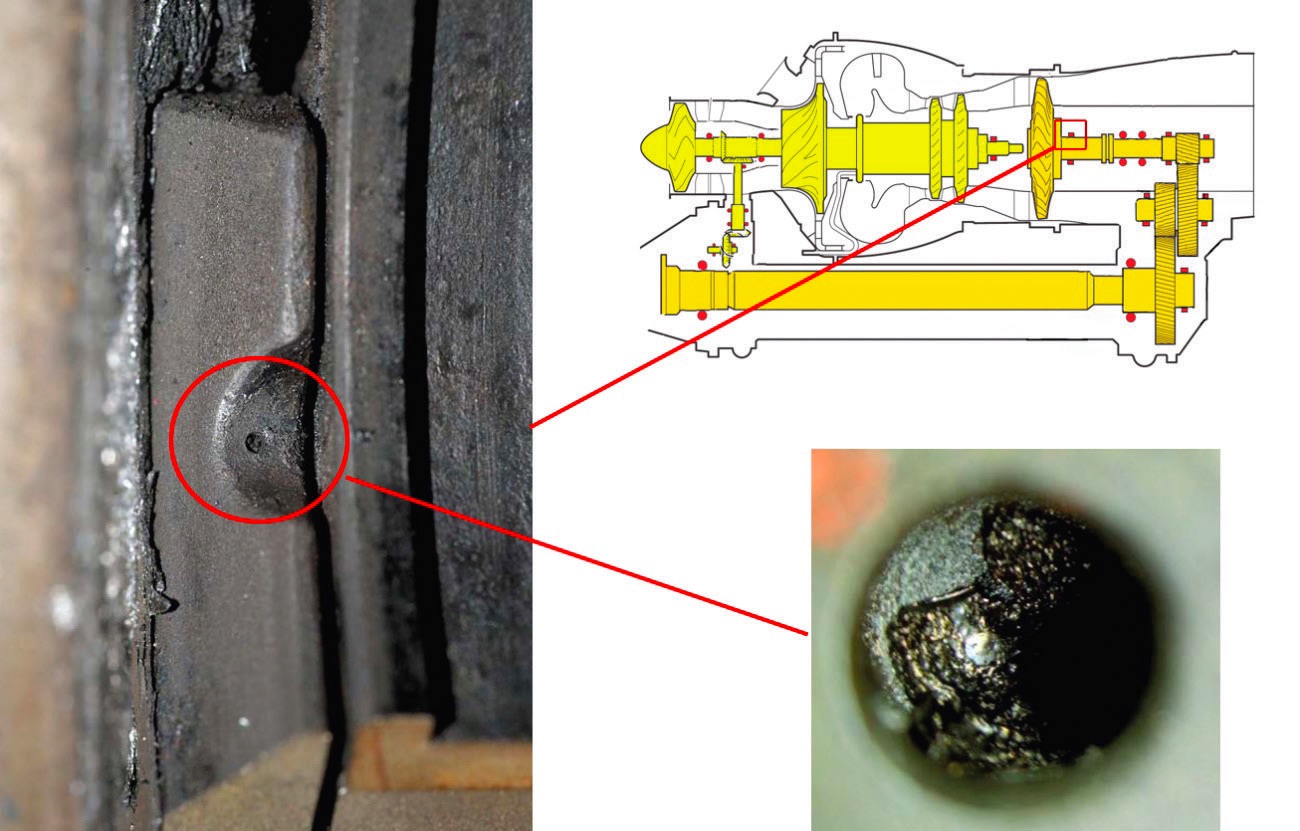 Figure 1. An accumulation of coke particles led to a blockage in an oil jet to the front bearing of the power turbine shaft in a Eurocopter AS350-BA. The blockage prevented oil flow to the bearing, which led to engine failure. Figure courtesy of the Australian Transport Safety Bureau.
Figure 1. An accumulation of coke particles led to a blockage in an oil jet to the front bearing of the power turbine shaft in a Eurocopter AS350-BA. The blockage prevented oil flow to the bearing, which led to engine failure. Figure courtesy of the Australian Transport Safety Bureau.
“There are a number of tests that are supposed to measure the resistance of coking of the oil, but there is not one test that can do that because the engine has many different parts,” says Yungk. Instead, the standards point to a handful of tests that, in combination, serve as a reasonable predictor of how much coking a lubricant may cause in the engine. For example, the hot liquid process simulator (HLPS) simulates deposition behavior of pure hot oil flowing through an even hotter pipe on its way to being sprayed on a bearing. The high temperature deposition test (HTDT) measures the amount and type of deposits formed when hot oil is vigorously bubbled with air and passed through a hotter pipe. This simulates how the bulk of the oil is evacuated or “scavenged” from bearing compartments. The vapor phase coker (VPC) measures how well oil resists deposition when churned up by bearings into vapor and mist as these airborne products are vented away from bearing compartments. “All three of these together, though they don’t correlate to one another, start to give you a picture of how that oil is going to perform at different parts of the engine with respect to deposition resistance,” says Yungk.
Other tests
Along with multi-hour tests to rule out unacceptable levels of oxidation and coking, lubricant formulators must run a slew of compatibility and stability tests to prove their oils will perform for thousands of flight hours without interfering with other parts of the engine, like O-rings and various metal components. For example, Douglass says there are a number of multi-thousand-hour elastomer compatibility tests run at a range of temperatures with different elastomers to make sure that the oil doesn’t cause degradation. “Because there are different types of elastomers, the tests are not necessarily one size fits all, but if your oil is aggressive toward fluorocarbon elastomers in a lab test, it’s going to be aggressive toward fluorocarbon elastomers in the real world.” He adds that even though the test may only be 3,000 hours while the elastomer may stay in an engine for many years, the tests are reasonable indicators of compatibility because they attempt to speed up degradation through elevated temperatures.
Additionally, both SAE AS5780 and MIL-PRF-23699 require lubricants to pass certain physical tests before commercial use, which assess how an oil changes over time. These tests measure properties such as viscosity at varied temperatures as well as lubricant evaporation.
One large constraint imposed on turbine engine lubricant formulators that the automotive industry is free from is a metal ban. As a safety precaution, metals are prohibited in jet engine oil to prevent particulate matter from escaping from the tailpipes—which don’t have filters like automobiles—and endangering people on the ground, and to prevent metal reaction in the engine at elevated temperatures. Though prudent, this limits a lubricant’s composition. Metals can increase oil stability and impart better load bearing capacity. For example, zinc dialkyldithiophosphate (ZDDP), a favorite antiwear additive of the lubrication industry, is not allowed in aviation engine oils because it contains zinc. Douglass says instead, aviation jet oils use ashless antiwear additives, which isn’t likely to change in the future due to the noted safety concerns, but also because most metal-containing additives could not survive the high temperatures of aviation engines, and would decompose and become sludge if they were present.
With such a high priority on safety, it’s no wonder that new aviation lubricants are rarely released into the market. But formulators also need to know their product will be commercially viable once available. For this reason, most oil companies won’t start a new lubricant design unless OEMs show interest in a new product. Added together, a new formulation can take well over 10 years from concept to release, a timeframe that’s shorter than the time it takes to develop a new engine.
The future is hot and electric
The trend toward hotter engines isn’t going away anytime soon, even with the prospect of aviation electrification, so the need for more thermally stable lubricants also will continue. However, these types of lubricants generally have suboptimal load carrying capabilities, which runs counter to the lubrication needs of another modern technology: geared turbo fans.
Geared turbo fans increase propulsion efficiency by reducing high turbine speed using a reduction gearbox (
see Figure 2). Because the reduction gearbox is installed inside the engine, it relies on the same lubrication system but adds a substantial amount of load. “It points to the need to make sure that the lubricant has the additional capability of supporting higher loads,” says Yungk, which is counter to the capabilities of thermally stable oils. In response to this dichotomy, the U.S. Air Force and Navy have encouraged the development of thermally stable oils that also have advanced load carrying capability, termed Enhanced Ester, or EE Class, lubricants. Yungk says, “Introduction of EE Class oils will help enable both thermal efficiency and propulsive efficiency engine designs as the industry strives toward its low-carbon sustainability goals.”
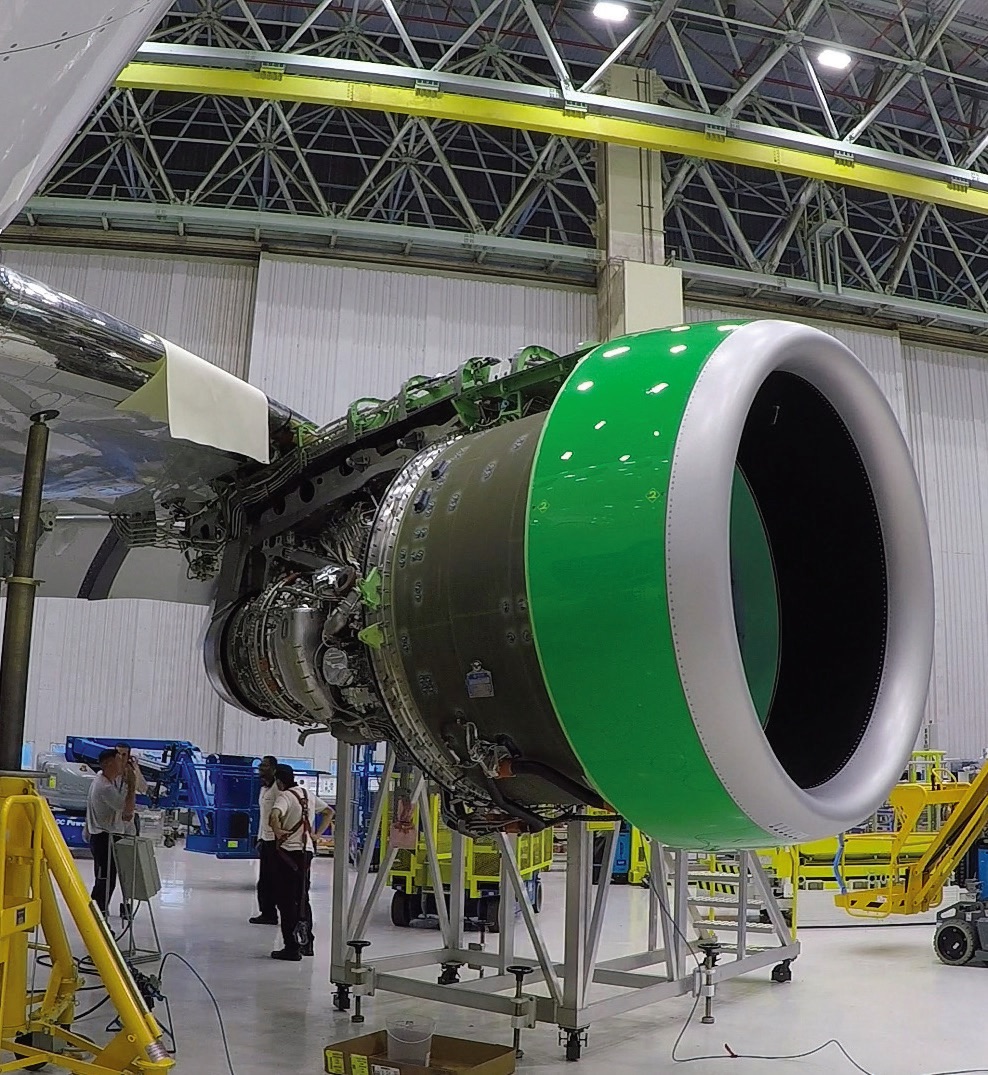 Figure 2. A geared turbofan engine installed on an aircraft. Figure courtesy of Pratt & Whitney.
Figure 2. A geared turbofan engine installed on an aircraft. Figure courtesy of Pratt & Whitney.
One way to eliminate the need to develop a lubricant that is both thermally stable and capable of bearing heavy loads is to replace the engine with an electric motor, which doesn’t require lubrication in the traditional sense, just a fluid to cool it. But while some companies have demonstrated proof-of-concept successes, the industry is still far away from a complete shift to electrification.
Andrew Dobbins, global OEM and sector manager at Shell Aviation, says, “The replacement of gas turbines with electric motors is already there in aircraft demonstrators; however, the limiting factor is the battery technology and energy density needed for the typical commercial airline flights.”
Currently, the amount of batteries that an aircraft would need to carry in order to power a flight weighs much more than the amount of standard jet fuel it requires, says Douglass. “Right now the efficiency of batteries is just not there for large planes.” He thinks electrification of smaller, personal planes could be possible within the next decade, “but for an airplane that’s going to fly across the ocean, it’s going to be a long time before you’ve got an electric plane.”
Dobbins, Douglass and Yungk all agree that a hybrid system is likely to precede a fully electric commercial aircraft. “Hybrid systems in which a gas turbine is available to provide electrical power in flight in a similar way to current auxiliary power units could be a feasible step in the technology road map where aviation safety is paramount,” says Dobbins. “In these solutions, there will remain a need for turbine oils with the potential for specialist fluids for electric motors and electrical power management.”
Aviation propulsion manufacturers are increasingly exploring hybrid technologies.
The NASA Electric Aircraft Testbed (NEAT) was built specifically to serve as a test facility for electric aircraft power systems (
see Figure 3).
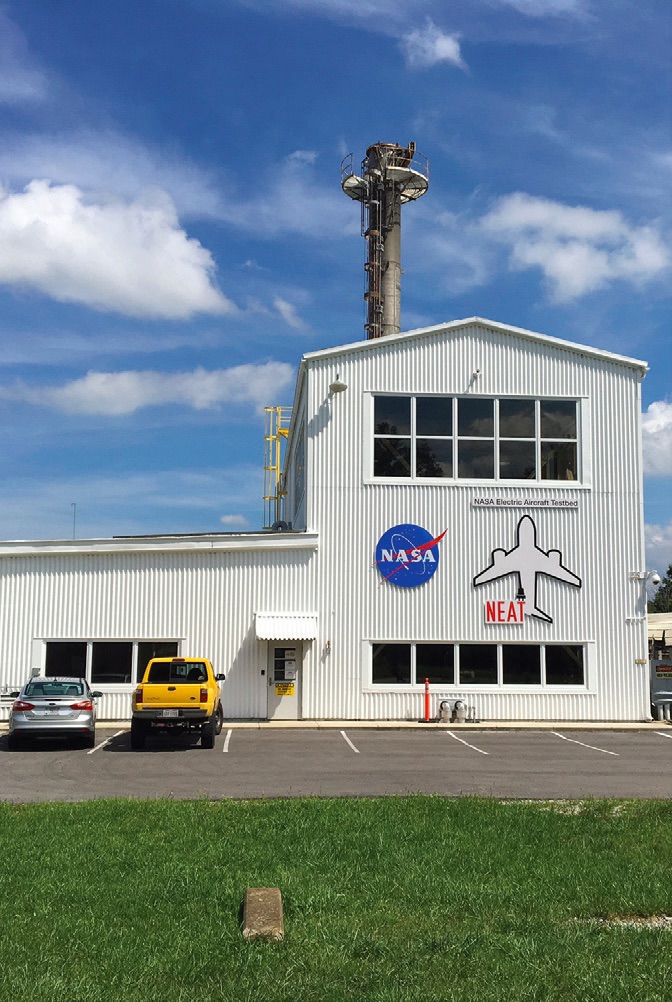
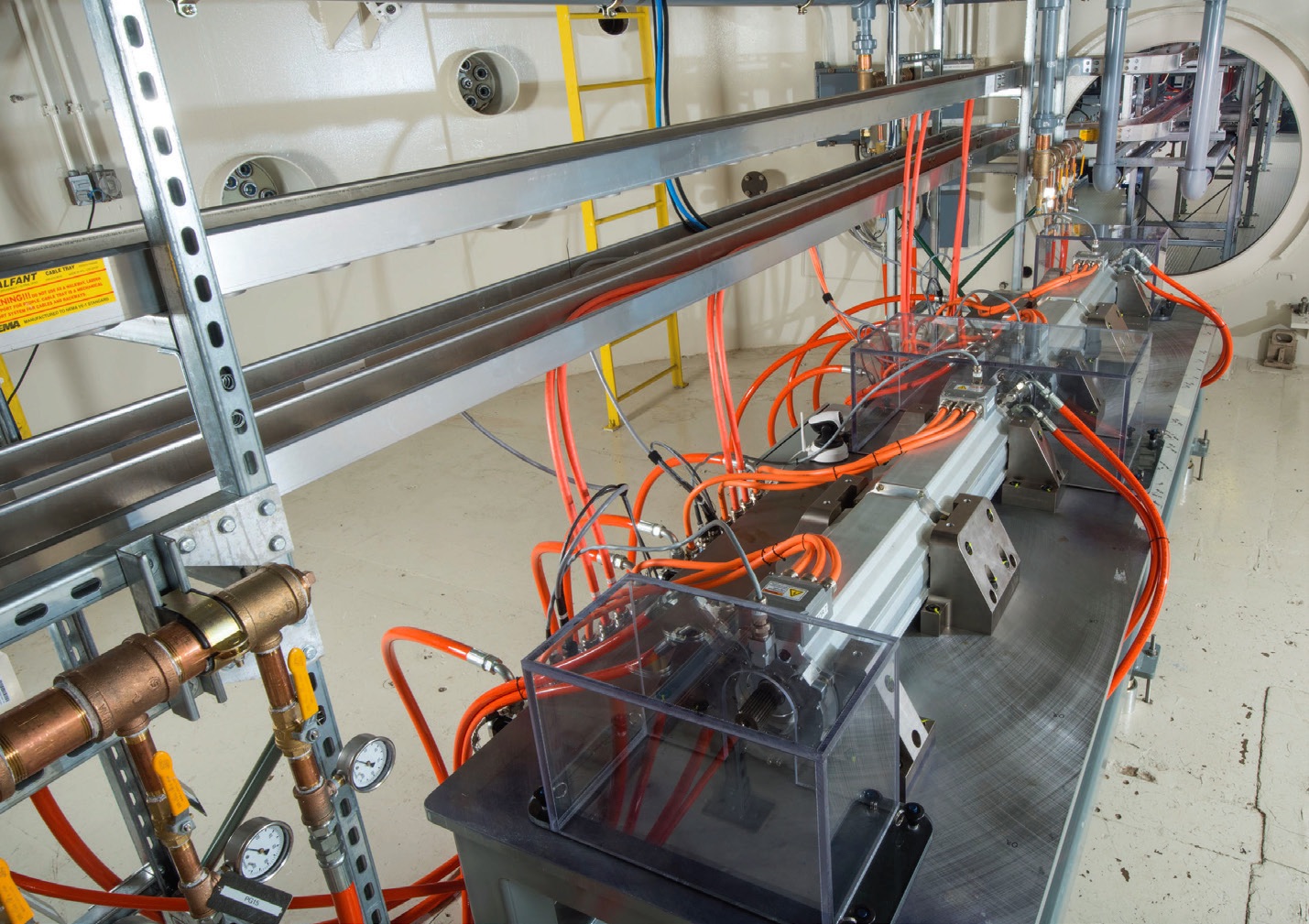
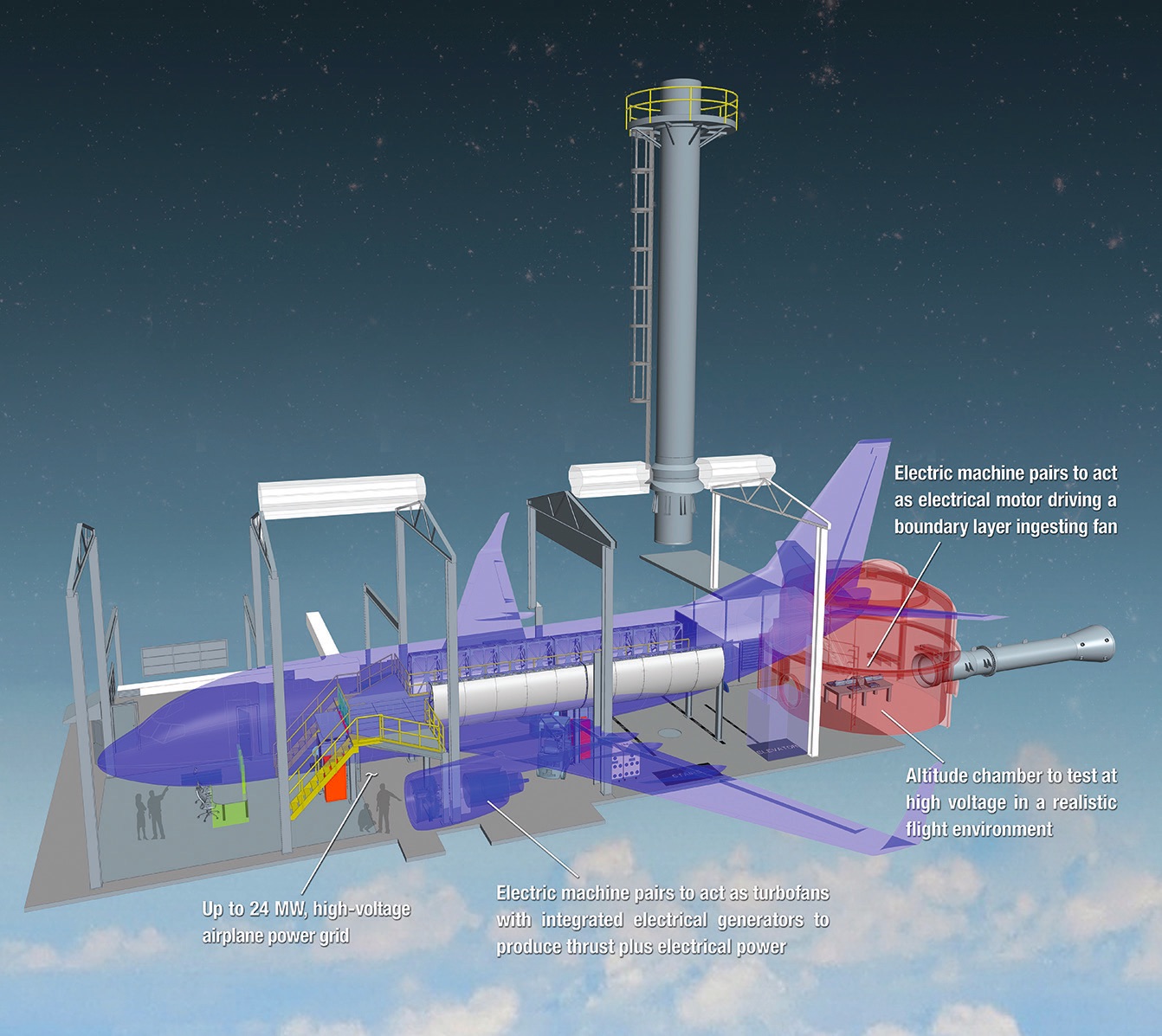 Figure 3. The NASA Electric Aircraft Testbed (NEAT) was built to develop and test electric aircraft power systems for a range of aircraft sizes. Figure courtesy of NASA.
Figure 3. The NASA Electric Aircraft Testbed (NEAT) was built to develop and test electric aircraft power systems for a range of aircraft sizes. Figure courtesy of NASA.
Yungk offers an example: “You could have a traditional gas turbine engine, which is feeding a bank of batteries, which then, in turn, drive electrically motor-powered propellers. Say you’re on descent and you’re really calling for propulsion. You can let those propellers windmill and generate electricity—just like a Prius would—and feed the batteries back with electrical charge.”
Ideally, a hybrid system would only require a single fluid, which would fulfill multiple roles. “That would include some of the heat transfer necessary for all the power conditioning battery, as well as be compatible with cooling a very power dense motor generator sitting out on the wing,” says Yungk.
The prospect of a hybrid fluid offers an exciting possibility. With the design of a brand new type of aircraft comes the possibility of designing a brand new fluid, which Yungk says will free lubricant manufacturers from the need to make oils backward compatible using limited technologies. “What we’re going to need more than anything is really good collaboration between the lubricant designers and the system integrators so that we know how many different jobs that fluid/lubricant is going to have to do.” He thinks we could see commercial hybrid planes sometime in the 2030s.
Outside of a new aircraft design, the development of novel jet engine lubricants will likely remain slow. Not only does approval take years as well as buy-in from multiple OEMs, but there are less oil companies formulating lubricants, says Yungk. One option to lower the lubricant design barrier is for OEMs to stop charging oil formulators for oil tests, which began in the 2000s. Another is for OEMs to begin co-engineering engine lubrication systems with oil formulators. But even with these changes, the timeframe for releasing a new oil might not change substantially for turbine engines.
Douglass highlights the long lead time with an example: “One of the oils that is widely used today was first sold by my company in 1963. That was 58 years ago.”
Berly McCoy is a freelance science writer and producer based in Northwest Montana. You can reach her at kimberly.mccoy@westernalum.org.